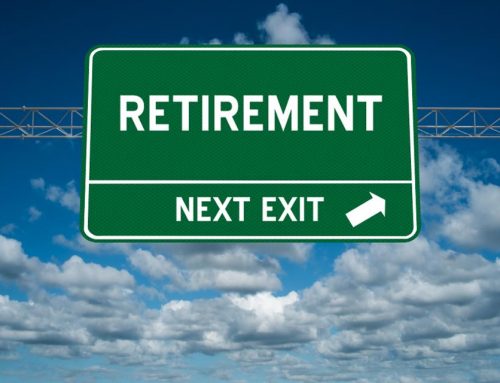Finite resources, and the need to consider the impact of the climate in fulfilling needs from water, food and energy supply, has opened opportunities for companies to offer alternative or sustainable solutions.
Investing based on climate or environmental concerns is a growing space, and typically factored in the broader sphere of sustainable investments.
Environmental and climate concerns
According to a report by the United Nations, global water demand is expected to increase by nearly one-third by 20501. Alongside this, the global population is tipped to be 9.8 billion people, all needing food, shelter and water, to be supplied from the restricted resources of earth2.
The challenges of supply and efficient use of the resources we have requires different ways of thinking and alternative approaches to how we use and manage the resources available to us. In theory, investing in this area could cover any activity to mitigate the impact of climate and human damage; works to prevent that impact, substitutes for things considered to cause or magnify environmental damage and promote more sustainable and efficient use of our resources.
The environmental and climate theme incorporates everything from renewable and alternative energy sources, energy efficiency, “smart” power grids, recycling, biofuels, water purification technology, anti-pollution technology, environmental remediation and rehabilitation, new materials (particularly for batteries) and “carbon trading” markets (more specifically, “right-to-emit-carbon-dioxide” trading markets.)
Finding investments in this area
On the Australian Stock Exchange (ASX), the most prominent stocks to claim climate credentials are the alternative energy suppliers. Of these, the purest-play exposure is Infigen Energy (IFN), which owns and operates six wind farms and one solar farm in Australia, with a total operating capacity of 557 megawatts (MW). It sells this electricity, and also sells large-scale generation certificates (LGCs) that it receives for generating “eligible” renewable electricity – it sells these LGCs to electricity retailers, who, as “liable entities” under the Renewable Energy Target (RET) scheme, are obligated to buy an LGC for every MWhr of “ineligible” (that is, fossil-fuel-derived) electricity they buy. The revenue earned by Infigen from LGCs is additional to that received for the sale of the electricity generated: in effect, Infigen earns revenue for producing “eligible” renewable electricity, whether it sells it or not. Infigen is a profitable company, but to date it has not paid a dividend.
Major Australian energy suppliers AGL Energy (AGL) and Origin Energy (ORG) are also renewable energy generators, but within broader portfolios that at this stage include fossil fuels. Currently only 10% of ORG’s energy generation is renewable, but it wants to triple that by 2020, with goals to produce 1200 megawatts from wind, solar and hydro. AGL has 9% of its generation coming from renewables at present (coal provides 84%), but has committed to exiting its coal-fired generation by 2048, and replace it by a mix of improved efficiency, renewables and demand response.
New Zealand renewable energy providers Mercury NZ (MCY), Meridian Energy (MEZ) and Tilt Renewables (TLT) are also listed on the ASX: MCY and MEZ are both profitable dividend-payers. MCY operates nine hydro stations, five geothermal power stations and a multi-unit gas-fired power station; MEZ operates seven hydro stations and ten wind farms in New Zealand and Australia. TLT has three operating wind farms in New Zealand and four in Australia, with a pipeline of wind and solar farms in development in both countries. These are companies to watch, as the renewable energy market develops in our region.
The ASX also hosts renewable energy developer Carnegie Clean Energy (CCE), which is trying to commercialise its wave-generated energy technology, as well as solar and battery storage facilities, specialising in micro-grid energy projects for island or remote and fringe communities. Also, there is Genex Power (GNX), which is building the Kidston Renewable Energy hub in north Queensland. This will involve converting an old gold mine into a hydro plant made up of two reservoirs, one located higher than the other, which are connected via a pump, to generate hydro power, as well as a 270 MW (megawatt) solar power facility. The idea is for the hydro plant effectively to “store” excess solar energy for later use. While promising, CCE and GNX are currently loss-makers.
You can find the biggest makers of wind power turbines, such as US conglomerate General Electric (NYSE), German industrial giant Siemens (Nasdaq-listed) and Danish company Vestas Wind Systems (Nasdaq-listed), and solar panel makers such as First Solar (Nasdaq-listed) on global stock exchanges. There are also what in the US are called “yieldcos” – offsets created by parent companies that hold and operate renewable energy projects, generating long-term cash flows that go mostly to dividends. In this category are US stocks such as Pattern Energy Group (PEGI) and TerraForm Power (TERP).
Taking a fund-based approach
For investors concerned about the risks involved in investing in single companies, accessing sustainable investments through managed funds and exchange-traded funds (ETFs) can provide an alternative.
At BT Financial Group (BTFG), we refer to these as “sustainability themed investments”, which encompass any managed investment that takes into account environmental considerations, governance standards (how a company is run) and social factors (such as product safety or labour standards) in their approach. These are known as environmental, social and governance (ESG) factors.
Sustainability themed investments can also involve a negative screen where it excludes certain industries or sectors due to concerns about ethical, environmental or social issues or positive screens where particular sectors or issues are targeted for inclusion, for example focusing purely on renewable energy companies. In some cases, sustainable investments may use a combination of ESG factors, positive and negative screens as part of investing decisions.
Although social and corporate-governance factors might not interest an investor motivated more by environmental or climate concerns, using a sustainable investment strategy may help identify the types of investments such an investor would wish to support.
Paying attention to how a manager approaches sustainability, which may be outlined in the product disclosure statement (PDS), product fact sheet or guide for the relevant product, will give you some insight into how the manager addresses ESG risk. For example, the Pendal Sustainable Future Australian Shares Fund does not invest in companies whose practices are not aligned with a sustainable future such as alcohol, gaming, tobacco, weapons, pornography and fossil fuel extraction (coal, oil and gas)3. This Fund aims to deliver long-term returns by investing in best of sector Australian companies who are leading the way in sustainability.
There are also a number of sustainability themed ETFs emerging in the Australian market, that might suit some investors.
Some examples include:
- Betashares Global Sustainability Leaders ETF, listed on the ASX (ETHI) which owns stocks that have been identified as “Climate Leaders” on the basis of relative carbon efficiency as well as having other eligibility screens to exclude companies with direct or significant exposure to the fossil fuel industry or engaged in other activities deemed inconsistent with responsible investment considerations.
- Russell Australian Responsible Investment ETF, listed on the ASX (RARI), which screens on the basis of ESG factors and also avoids companies involved in coal mining, coal-powered electricity generation or with repeated instances of environmental damage.
Investing through ETFs in this space is still a growing area, the US offer a number of climate specific ETFs which may provide an indication of how the Australian market could develop in the future. Some examples include the iShares Global Clean Tech ETF (Nasdaq; ICLN), the Change Finance U.S. Large Cap Fossil Fuel Free ETF (NYSE Arca; CHGX), the First Trust Global Wind Energy ETF (NYSE Arca; FAN), the Guggenheim Solar ETF (NYSE; TAN: it is the only pure-play US solar ETF), PowerShares WilderHill Clean Energy ETF (NYSE Arca; PBW) or the First Trust NASDAQ Clean Edge Green Energy Fund (Nasdaq; QCLN). There are even specialist yieldco ETFs.
Climate and environmental investing is an interesting and growing sphere, but as always, investors should be careful to ensure any selected investments match with their overall investment strategy and goals.
- The United Nations World Water Development Report 2018 – Nature-based solution for water
- United Nations, World population projected to reach 9.8 billion in 2050, and 11.2 billion in 2100, 21 June 2017.
- Pendal Fund Services Limited ABN 13 161 249 332, AFSL 431426 is the responsible entity of, and issuer of units in, the Fund. A PDS for the Fund can be found at www.pendal.com.au. You should obtain and consider the PDS before deciding whether to acquire, continue to hold or dispose of interests in the Fund.
Information current as at 3 July 2018. This article has been prepared by BT Financial Group, a division of Westpac Banking Corporation ABN 33 007 457 141, AFSL & Australian credit licence 233714 (Westpac).
This information does not take into account your personal objectives, financial situation or needs and so you should consider its appropriateness having regard to these factors before acting on it. This article may contain material provided by third parties derived from sources believed to be accurate at its issue date. While such material is published with necessary permission, no company in the Westpac Group accepts any responsibility for the accuracy or completeness of, or endorses any such material. Except where contrary to law, we intend by this notice to exclude liability for this material. Past performance is not a reliable indicator of future performance. This article provides an overview or summary only and it should not be considered a comprehensive statement on any matter or relied upon as such.
Westpac and any of the companies in the Westpac Group may have invested in the past, currently or in the future, in some of the ETFs referred to in this document. You should read the relevant disclosure document before deciding to invest in any financial product. Unless otherwise disclosed in the disclosure document, investments in any of the funds referred to in this document are not deposits with, investments in, or other liabilities of Westpac or any other company within the Westpac Group. ©Westpac Financial Services Ltd 2018






